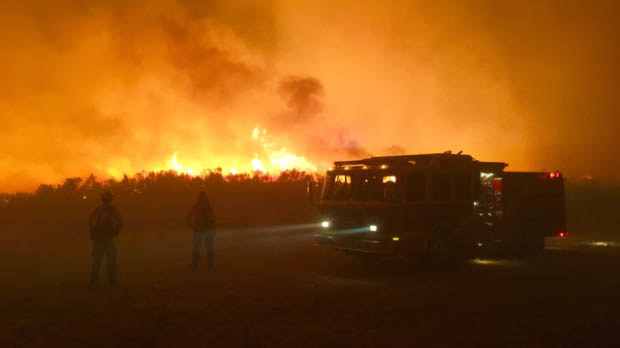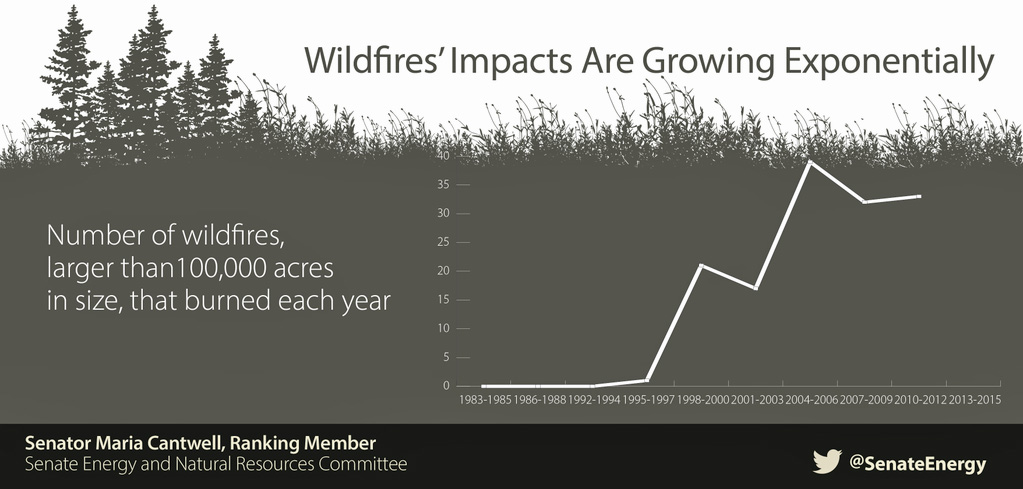
The National Interagency Fire Center has officially adopted the definition of a megafire (that we have been using for years) as a fire that burned at least 100,000 acres. Their preliminary data for 2015 shows 18 megafires — so far. This includes complexes (counted as 1) and individual fires. According to NIFC this ties the record that was set in 2006, for most megafires in one fire season.
However their data for 2006 is different from the information we received from the U.S. Forest Service last May:
Fires larger than 100,000 acres (megafires)
2005 – 10
2006 – 15
2007 – 13
2008 – 5
2009 – 12
2010 – 3
2011 – 14
2012 – 14
2013 – 8
2014 – 4

While the number of megafires has increased since 1983, the number of wildland firefighters working for the five federal land management agencies has decreased by 17.5 percent in the last four years according to testimony by USFS Chief Thomas Tidwell before the Senate Committee on Energy and Natural Resources in 2011 and 2015:
Federal wildland firefighters
2011 – 16,000
2015 – 13,200

And yet we had over 30,000 people employed during the peak of fire season. So I’d say they’ve gone to contracting or moving folks to fire detail. Personally, I’d like to see a more proactive fuels treatment approach.
Regarding the ‘megafires’, 11 of those were in Alaska which had an extraordinary fire season. And most of those (if not all) were simply monitored unless point protection became important.
I also noted the big jump in acres burned from the NITC Situation Report. Last report had just over 9 million acres, suddenly up to over 11 million acres, almost twice the 10 year average. Amazing.
Now that we keep talking the reduction of firefighters by 17.5 percent….
Let’s ask the hard questions :
Is it pay?
Is it QOL?
Is it just simple economics and that Congress / USFS is not authorizing hiring due to budgets?
Is it that number of folks see that the temporary train coming back yr after yr and not see the PFT gig in the future?
Instead of 12 Airtanker studies. …let’s do more on the above questions
Simply stating the same facts to include reductions during megafires, once again, does nothing in the solutions department.
Again the Agencies stating like I have heard….don’t come to me with problems. .have a solution to address those problems
We already know the megafires and climate change issues. .
What is the plan for the Agencies to turn that 17.5 percent around?
Megafires like climate change needs two things:
One sound policy across the board and a helluva lot of money to support the up n coming issues……….